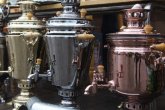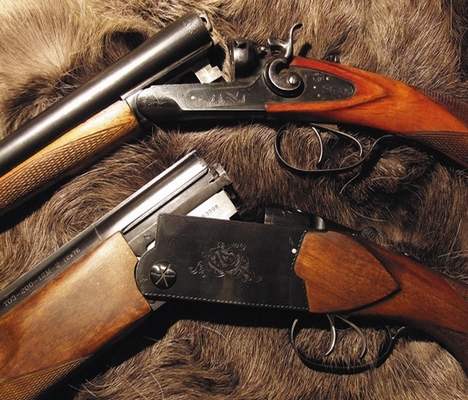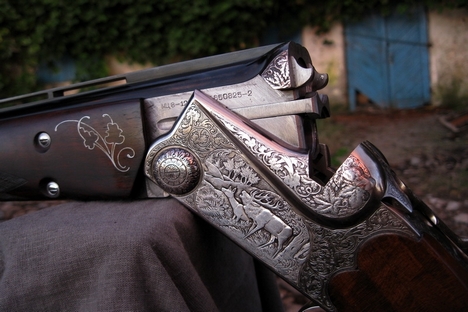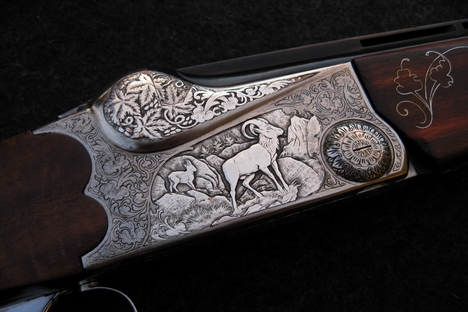From muskets to missiles and even samovars, Tula forged them all
.JPG)
In the 18th century, the plant produced almost all weaponry issued to Russia’s soldiers. Source: Press photo
The city of Tula has, since the 16th century, been the famed centre of metal and ironworks and arms manufacturing for the Russian army.
Metal workshops and factories in this city, located in densely forested land around 120 miles south of Moscow, have produced almost the entire range of Russian infantry weapons, from blades, edged weapons and medieval muskets to modern anti-tank missiles. Almost half of the regular army’s weaponry was in fact made here.
The city acquired this unique character when, in the late 16th century, Tsar Fyodor Ivanovich (Fyodor I) ordered dozens of families of craftsmen to settle on the banks of the River Upa. These self-taught craftsmen evolved into specialists who forged guns and muskets from the ironworks. Gradually, this became the site for the first armaments factory or planned location for government arms production.
Tula’s location and conditions were ideally suited to turn it into the hub for Russia (and Eastern Europe’s) weapons industry, with ready access to iron ore, and with the river as a convenient route for transportation.
Dutch know-how
The home-based handiwork of the artisans continued until the 1630s, when the Russian government decided to set up comprehensive industrial military production here. The Dutch merchant Andrew Vinius received a contract to build a metallurgical plant which began casting cannons and cannon balls.
Two decades later his compatriots established separate production facilities for firearms and other weapons, inviting several hundred specialists from abroad to man the new enterprises. They not only had to establish mass production of muskets but also teach this complex process to Russian craftsmen, who still preferred to work in the older, more basic artisan way.
During the 1812-1814 war with Napoleon, the Tula plant made half a million army muskets. Source: Press photo
At the time, Russia was locked in conflict with its neighbors and suffered from a constant lack of weapons. In 1695, merchant Nikita Demidov, the later founder of a famous dynasty of Russian industrialists, set up the first private production works, the Tula Arms Factory, with the permission of the Tsar. In 1712, the first Tula state arms factory was established by imperial decree, its production capacity subsequently growing at an astonishing rate.
20,000 muskets a year
Eight years after work began, more than 1,000 craftsmen were producing more than 20,000 muskets a year. For the first time in Russian history, the Tula facility began manufacturing calibrated muskets, weapon parts like flintlocks and butt stocks, as well as a wide range of bladed weapons for the army – long swords, broadswords, cutlasses and bayonets.
Tula is one of the Russia’s major arms centers. Source: Press photo
In the 18th century, the plant produced almost all weaponry issued to Russia’s soldiers. During the 1812-1814 war with Napoleon, it made half a million army muskets, with monthly production exceeding 13,000 units. The era of steam-driven machinery then enabled an overhaul of production methods.
While making musket barrels used to mean laboriously gouging out grooves in iron by hand, the new machinery allowed them to be efficiently steam drilled, thereby greatly increasing the efficiency of the enterprise. The transition from muzzle-loading muskets to breech-loading rifles required the complete refitting of the Tula plant. In 1834 it was further modernized with the first fully steam-powered machinery, and within 10 years the plant numbered among the 10 largest in the world.
Rifles for the Reds and Whites
In 1891, Tula became the main base for the mass production of the legendary Russian automatic rifle design of the engineer Sergei Mosin, and while there are no exact production figures, millions were produced. Mass production of the Nagant revolver also began here in 1895, and of the British Maxim machine-gun in 1905. During the Civil War, two thirds of the weapons in service with both the Red and White armies had been made in Tula.
For more than four centuries, the city of Tula has been the famed center of metalworking and arms production for the Russian army. Source: Press photo
On the eve of World War II, local gunsmith Fyodor Tokarev launched his own rifle and pistol design. The SVT-38 rifle is considered one of the best self-loading rifles of the war, while the TT pistol (the "Tula Tokarev") saw long service with the Soviet Army and police.
The 1960s brought a new era in the plant’s history. Along with small arms and edged weapons, it launched a line for the production of the legendary Kalashnikov assault rifle, as well as grenade launchers, anti-tank launchers and aircraft machine-guns.
Today, a monument to Peter I stands at the gate of the Tula Arms Factory in tribute to the origins of the Russian military-industrial complex. And inside, the past lives on in one section of the works which still forges the country’s heraldic military shield.
All rights reserved by Rossiyskaya Gazeta.
Subscribe
to our newsletter!
Get the week's best stories straight to your inbox



